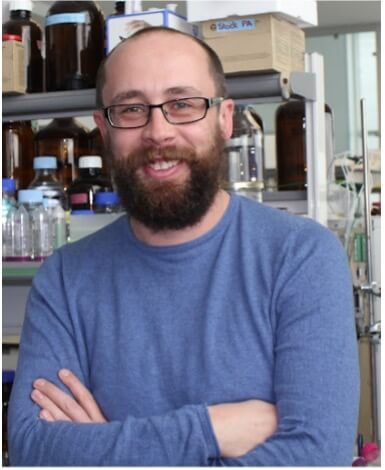<< Back to MOTIFvations Blog Home Page
Kacme – A New Histone H4 Modification Delivers Non-Mutually Exclusive Histone Acetylation and Methylation

November 28, 2023
Table of Contents:
Introduction: Heads or Tails - Why Not Both?
You toss a coin – heads, you order tacos; tails, you order pizza. We generally consider these culinary outcomes "mutually exclusive," but what happens when heads and tails turn up simultaneously (taco pizza!?)? While this situation may seem unlikely (but potentially tasty), researchers have recently toyed with a similar epigenetic concept concerning the co-occurrence of lysine acetylation and methylation on the same amino acid residue in a histone context.
In combination, an ever-increasing number of post-translational modifications form what is known as the "histone code" (Jenuwein and Allis), which helps to regulate chromatin dynamics and gene expression. As part of this code, researchers generally consider that lysine (K) acetylation (ac) and methylation (me) display mutual exclusivity; in other words, they do not appear on the same residue. Importantly, chemical principles do not actually consider these modifications mutually exclusive and instead permit the stable acetylation of a monomethylated lysine residue, which would create a tertiary amide that represents both sides of the coin - Nε-acetyl-Nε-methyllysine or "Kacme" for short.
In a (mutually) exclusive new study, researchers "head"-ed by Matthew D. Simon (Yale University) now describe Kacme as a perfectly concocted fusion between two previously mutually exclusive epigenetic concepts; overall, they report Kacme as a post-translational modification that forms a distinct part of the histone code with fundamental importance to chromatin biology. Let's hear their mutually exclusive epigenetic "tail."
Confirming the Presence of Kacme on Histones and in Cells
Lu-Culligan, Connor, and Colleagues first generated a peptide library containing a central Kacme residue in order to raise a specific antibody that would support subsequent analyses. The immunoblot assays employing this Kacme antibody revealed a prominent band at the size of histone H4 in histone extracts from fruit fly, mouse and human cell lines, and mouse tissues; further studies then narrowed the view and identified the Kacme modification on histone H4 lysine 5 and lysine 12 (H4K5acme and H4K12acme) in human cells extracts.
The authors next performed a proteomic analysis of histones from mammalian cells to validate the presence of Kacme, which revealed the relative abundance of peptides carrying the H4K5acme modification. They observed H4K5acme levels at less than 1% of unmodified H4K5 peptide from histones extracted from human, mouse, and fly cells, which compares well to the levels of the H3K4me3, H3K9ac, H3K27ac, and H4Kac modifications that mark transcriptional start sites and associate with active transcription.
Kacme Goes Genome-Wide
To evaluate the relevance of this novel histone modification at a genome-wide scale, the team next applied chromatin immunoprecipitation followed by high-throughput sequencing (ChIP–seq) with the Kacme antibody in a fly embryonic cell line. Interestingly, they encountered Kacme enriched at gene promoters, with a higher enrichment at more highly expressed genes; furthermore, Kacme localization correlated with modifications associated with active chromatin (such as H4Kac). Increased H4Kac and decreased Kacme signals also occurred at a subset of genomic regions after induced heat stress (Green et al. and Mahat et al.), demonstrating the dynamic nature of the Kacme modification.
Moving to a similar analysis in human cells, the authors applied ChIP–seq to immortalized human kidney cells and ChIP–seq and CUT&RUN (cleavage under targets and release using nuclease) to human leukemia cells to study the genome-wide distribution of Kacme. These assays confirmed the enrichment of Kacme at gene promoters and the colocalization of Kacme with marks of active transcription (including H3K4me3 and H4Kac). Overall, these findings provided evidence for a conserved role for Kacme across species, further underscoring this histone modification's potential importance.
To focus their study further, the team next applied ChIP-Seq analysis in immortalized human kidney cells with the help of an antibody raised against a more specific H4K5acme peptide, which revealed a near 100% overlap with peaks from the previous Kacme ChIP-Seq experiment. In short, multiple additional assays with this more specific antibody fully validated the conclusions made when applying the more general Kacme antibody.
Linking Kacme to Gene Transcription
The team next aimed to evaluate the relationship between Kacme-enriched gene promoters and gene transcription by applying transient-transcriptome timelapse sequencing (TT-TL-Seq) (Schofield et al.) to examine transcriptional activity and start-timelapse sequencing (STL-Seq) (Zimmer et al.) to examine the kinetics of promoter-proximal pausing. Overall, higher ratios of Kacme to H4Kac at gene promoters correlated with higher levels of transcription, and higher Kacme levels associated with higher levels of transcription and transcription initiation even when controlling for H4Kac levels. Kacme-enriched gene promoters also possessed binding site motifs targeted by transcription factors such as the E2F family, suggesting that these promoters regulate genes involved in DNA replication and the cell cycle.
How to Read and Write Kacme
Finally, the authors shifted from understanding where this novel histone modification lies in the genome and Kacme's potential role regarding chromatin regulation and transcription to an appreciation of potential Kacme "writers" and "readers." Independent in vitro assays (immunoblotting and mass spectrometry) demonstrated that the lysine acetyltransferase p300 (but not Tip60) could acetylate monomethylated lysines on H4 peptides to form Kacme. Furthermore, treating immortalized human kidney cells with a p300 inhibitor prompted a modest but reproducible reduction in Kacme levels, suggesting p300 as "a" Kacme writer but not the only Kacme writer. Subsequent ChIP–qPCR analysis then identified regulatory regions with decreased Kacme enrichment after p300 inhibition, with the associated genes exhibiting reduced expression. Conversely, treatment of cells with a histone deacetylase/zinc hydrolase inhibitor prompted an increase in Kacme levels. Potential "readers" of Kacme included the bromodomain protein BRD2, which had been previously shown to bind to H4K5ac and H4K12ac (LeRoy, Rickards, and Flint, Umehara, J. Biol. Chem. 2010, and Umehara FEBS Lett. 2010); however, the BRD2, BRD3, and GAS41 proteins all became enriched from extracts when the authors implemented biotinylated Kacme peptides and both BRD2 and BRD3 colocalizing with Kacme peaks identified by ChIP–seq.
Kacme: Heads and Tails?
Overall, the authors report the presence of Kacme on histone H4 across a range of species, where this modification associates with others indicative of active chromatin and transcriptional initiation and undergoes regulation in response to relevant biological signals. Furthermore, the team behind this fascinating new study has begun to delineate the mechanisms controlling the deposition and removal of Kacme in the epigenome and identify those chromatin proteins that interact with this Kacme to control chromatin function and gene transcription.
So, from now on, do we call heads, tails, or heads and tails? For more on how the mutual exclusivity between histone lysine acetylation and methylation has ended with the description of Kacme on histone H4, head over to Nature, September 2023.
About the author

Stuart P. Atkinson, Ph.D.
Stuart was born and grew up in the idyllic town of Lanark (Scotland). He later studied biochemistry at the University of Strathclyde in Glasgow (Scotland) before gaining his Ph.D. in medical oncology; his thesis described the epigenetic regulation of the telomerase gene promoters in cancer cells. Following Post-doctoral stays in Newcastle (England) and Valencia (Spain) where his varied research aims included the exploration of epigenetics in embryonic and induced pluripotent stem cells, Stuart moved into project management and scientific writing/editing where his current interests include polymer chemistry, cancer research, regenerative medicine, and epigenetics. While not glued to his laptop, Stuart enjoys exploring the Spanish mountains and coastlines (and everywhere in between) and the food and drink that it provides!
Contact Stuart on Twitter with any questions
Related Articles
Seeing the Bigger Picture – Spatially Resolving Chromatin Modification Profiles with Spatial-CUT&Tag
August 9, 2022
Spatial-CUT&Tag spatially resolves chromatin modification profiles in tissue samples to aid the exploration of epigenetic regulation, cell functions, and fate decisions.
Read More
Mass Spectrometry – Attaining Massive Amounts of Histone Modification Data from Small Clinical Samples
November 9, 2022
A new advance now permits the profiling of histone modifications from vanishingly small amounts of clinical samples via mass spectrometry. The ability to profile histone modification levels in tumor subpopulations may permit the field to make massive strides forward in our understanding of tumor metastasis, intratumor heterogeneity, therapeutic responses by tumors, and the role of tumor subpopulation interactions in driving tumorigenesis and identifying potentially useful biomarkers.
Read More
<< Back to MOTIFvations Blog Home Page








